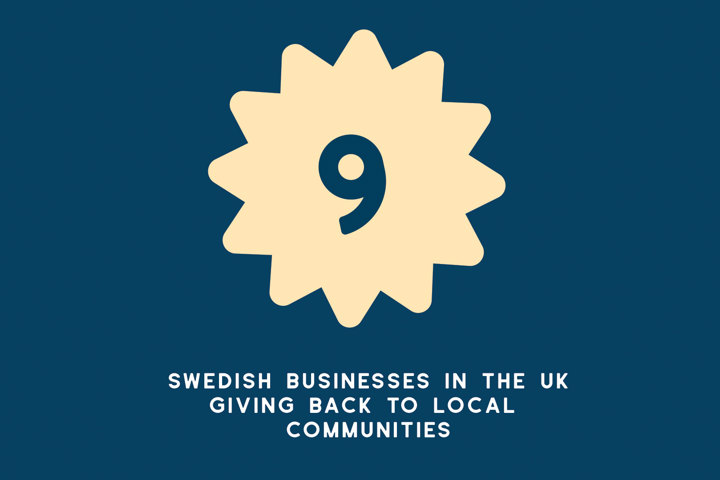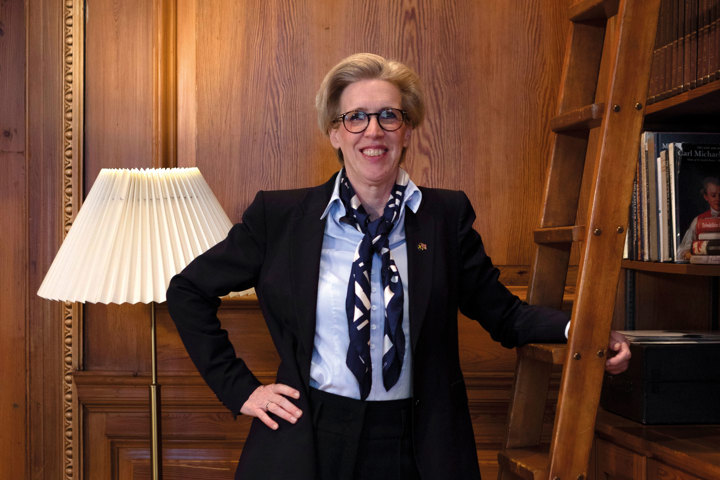
Optimising the office
21 February 2022
It is hard to guess what the workplace of the future will look like. The traditional office continues to be challenged by new trends and changing policies, forcing them to redefine themselves and be more sustainable and suited for flexible conditions. After coworking spaces, open-plan offices and WFH-solutions, what comes next? The Link spoke to Fredrik Bergsten, Managing Director at SCC patron Kinnarps, about what to expect.
“Five years ago, most organisations were trying to fit as many people as possible into an office, using different setups. Since then, we’ve seen a significant change with the introduction of a more residential look in the office and possibilities to choose between different environments depending on activity and work task,” Fredrik Bergsten, Managing Director at Kinnarps explains.
The office is a place that is constantly changing. Having been around for centuries, what most people think of today when they hear the word “office” is quite different from what it used to be. But as people’s ways of working change, so do the needs for an office. If anything, this became evident as the pandemic struck the world.
“In the last 18 months, organisations have had to rethink why people are coming into the office. Five years ago, it was because they ‘had’ to. Today, coming into the office needs to ultimately provide a better experience than working from home. With this change comes the need for flexibility and the ability for the office to continue to evolve.”
Even if this new view of the office is a direct result of Covid-19, it won’t disappear along with the pandemic, according to Fredrik. Same goes with the flexible working models that many have gotten used to.
“I don’t think we will ever go back to working in the same way as before. The workplace must evolve and meet the needs of today, not meaning that we will move away from having offices. I’m confident that the office will continue to play an incredibly important role for organisations and their employees – not least to support their wellbeing, efficiency and creativity.”
A new way of working
Instead of going back to our old ways, Fredrik believes in bringing the best of both worlds when defining what the future offices will look like. While home offices can boost productivity for some, a shared office space might be ideal for collaborating and more creative tasks.
“Homeworking clearly works for some, and I think we will continue to see a mix over the next couple of years. For some businesses, it’s been a realisation that their employees can be as productive when working from home. At the same time, in-person collaboration and true creativity is difficult to achieve in that environment. Our brains aren’t designed to switch into a creative mode from one moment to the next – you need an environment that triggers creativity and allows you to get into the flow.”
The challenge will be to combine the old and office-based, with the new and remote. Even with employees increasingly moving away from the office, Fredrik doesn’t consider it a thing of the past. On the contrary, he believes that offices will become more important and progressive than ever.
“I think they will play an even bigger role in the future, especially with the introduction of AI and more functions becoming automated. To ensure that your office supports the change, we believe you need to design an office that can change forever. A future-proof and long-lasting office interior solution needs to be flexible enough to keep changing with the organisation. These could be small changes that happen every day, but they can also be bigger shifts and transformations that occur with far less frequency, like the shift we find ourselves in right now.”
A (climate) friendly place to work
To be considered an office well-suited for the future, it is not enough to be adapted for flexi- or hybrid working. It is becoming more important than ever to nurture and care for the things surrounding the office, both in terms of people and environment.
“Thankfully, sustainability is on top of most organisations’ agenda today. The companies most successful with this transition are the ones that take a holistic view and not just focus on the actual office space, but also ensure that their employees are sustainable. I also believe that we will see a change in how furniture is procured, and the importance of high quality that gives the interior a long life cycle.”
It is still hard to say what the new normal office will look like. The years following the pandemic will be a time of experimenting, with some businesses deciding to shift fully to remote work, others going back to the office, and many falling somewhere in between the two.
“I think it will be interesting to see how many of the organisations that have chosen to go 100% homeworking today, will continue to do so in maybe 3-5 years. The office plays a big role in supporting the mental wellbeing for many people and the need for that will only increase. For example – how do you ensure your employees are ok when only seeing them on a screen?”
No matter if you are team Office or team Remote, we are all clearly moving away from the one-size-fits-all era. Instead, we might expect the future offices to be as diverse as the companies and people working in them.
Five steps to future-proof the office
- Set a vision and goals. To create consensus, management needs to set a vision and goals for the business. Vision and goals should then form the basis for the entire process.
- Involve staff. A crucial factor in the success of your change journey is to inform, involve and prepare all employees from the outset. When you take advantage of different experiences and needs, the end result is always better.
- Design the office according to actual activities. To create a successful office, the interior needs to be designed according to mapped activities and working methods and put both the individual and the business in focus.
- Set rules and guidelines for the office. To make the best use of the office and create a good work culture, you need to set clear guidelines for how to use and behave at the workplace, as well as guidelines for remote work. The rules for the office must be dynamic and adapted to changing conditions.
- Follow up. It’s important to follow up on how the new office works and how the new environments function and are actually used. Follow-ups must be carried out regularly to ensure the office is adapted to changing needs and new employees.



Join our mailing list
and keep up-to-date with the Chamber's news and events.
Read our Privacy Policy here